A future where clean and safe water supports
the lives of people around the world
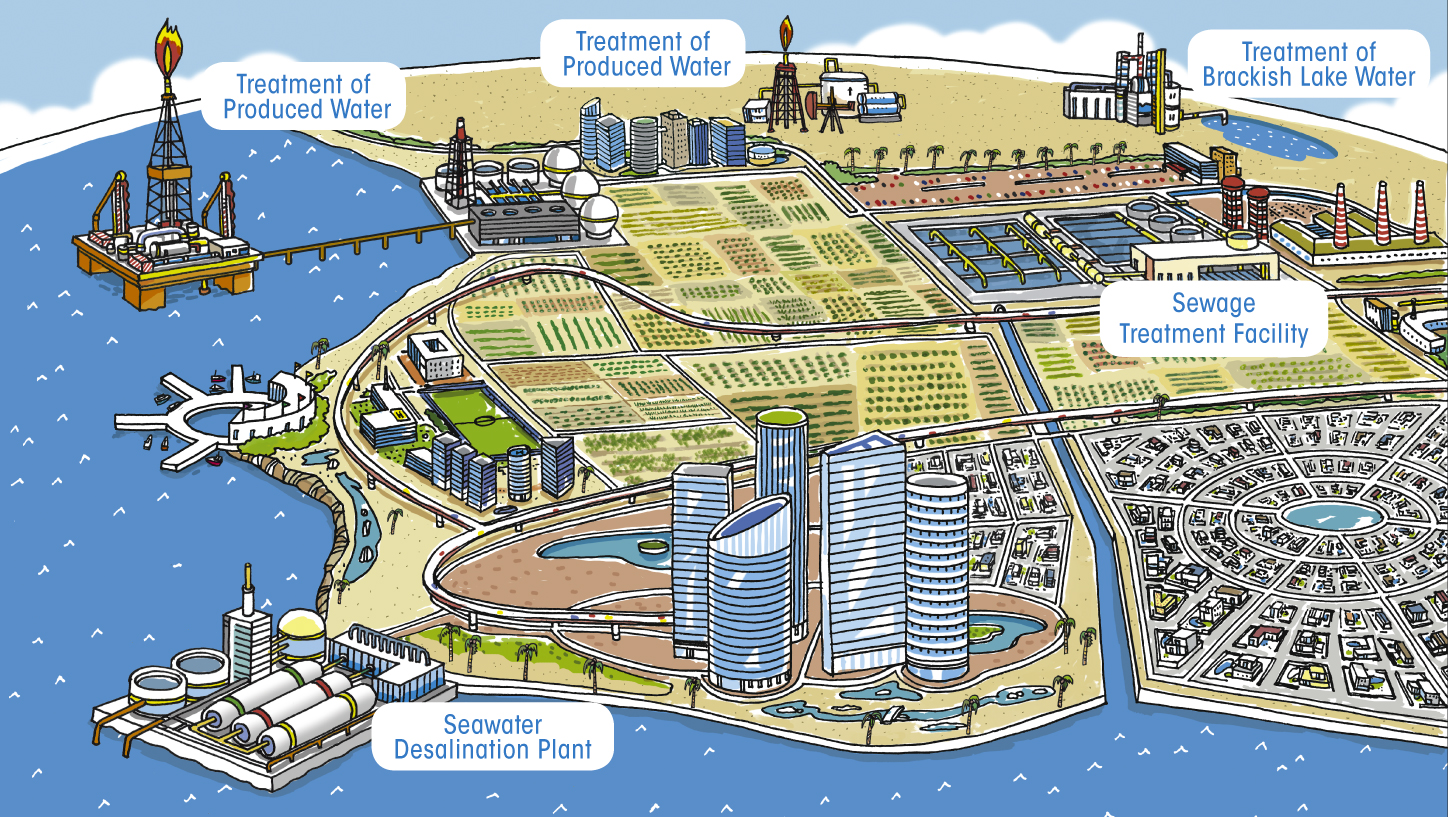
The Aqua Innovation Center develops technology that produces safe and secure water from various sources such as seawater, water containing pollutants, and harmful substances. Through the establishment of the water cycle, we aspire to provide drinking water, water for home use, agricultural, and industrial water worldwide. As the population growth explodes in the 21st century, we provide sufficient water supply to contribute to global sustainability in food production, industry, and sanitation. In addition, increased export of agricultural products and the development of the industry will enrich the economy and contribute to sustainable and comfortable living in the world.

Key R&D Themes
1
"Desalination Technology Using Nanocarbon Reverse Osmosis (RO) Membranes Current desalination polymer membranes face problems such as the large consumption of energy due to high-pressure pumps and their low resistance to chemicals.
We have developed a robust membrane using nanocarbon materials that is resistant to chlorine and fouling, in addition to superior desalination and water permeability. By taking advantage of the characteristics of the developed membranes, a low-cost, environmentally friendly seawater desalination system will be constructed by simplifying the process and significantly reducing the environmental impact.
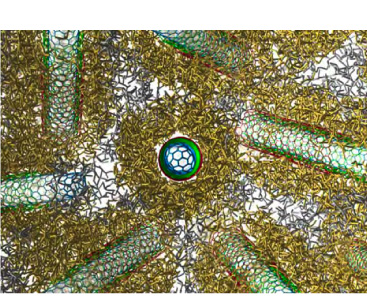
Structural model for CNT/PA nano-composite
RO membrane
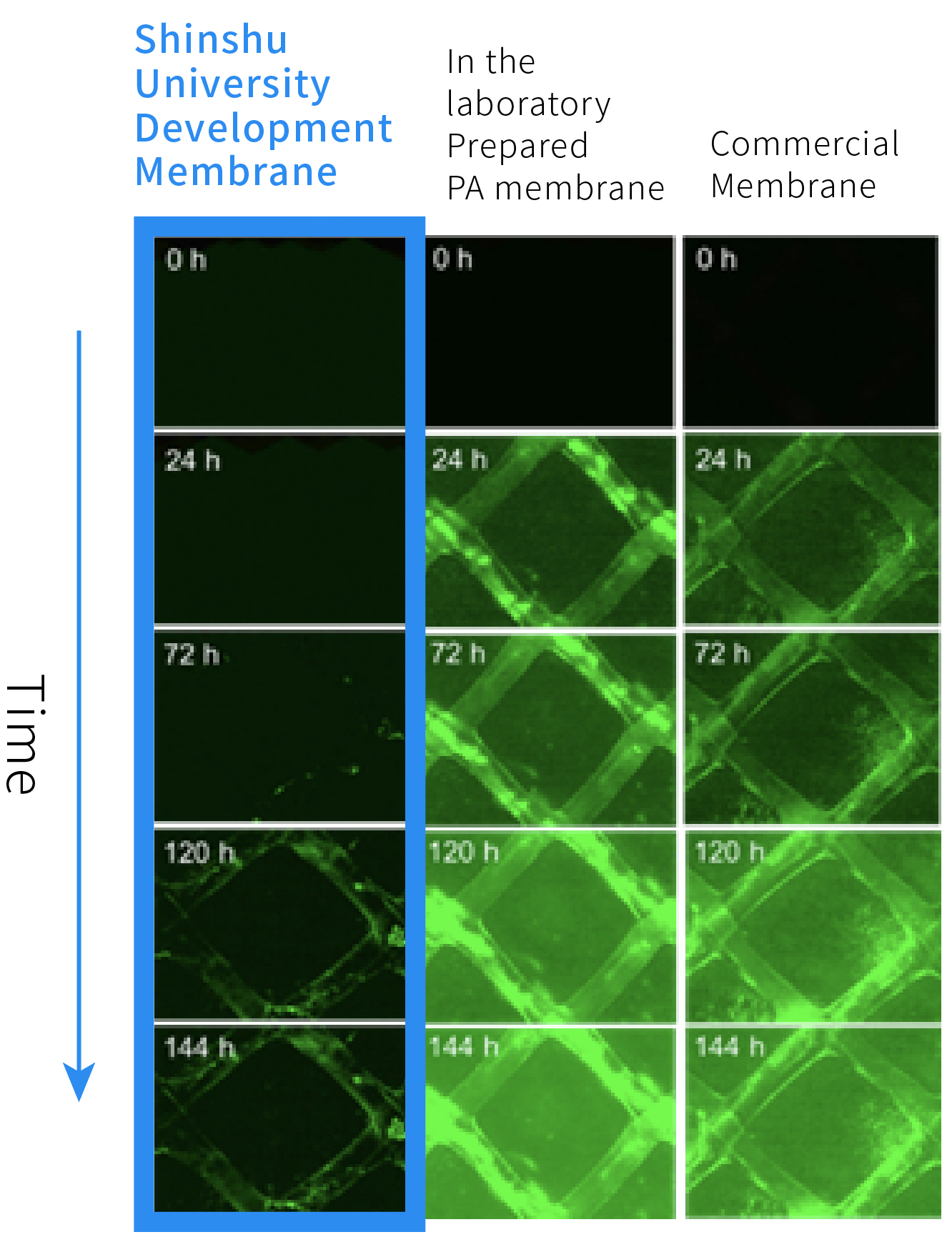
Fouling resistance test results
Developed membrane has excellent antifouling
properties with significantly
less adhesion of green-colored protein
Computational science, structural analysis, pore analysis using a supercomputer located at Shinshu University is used for the development of carbon membranes. Fluid flow simulation and other methods will be used to advance module design.
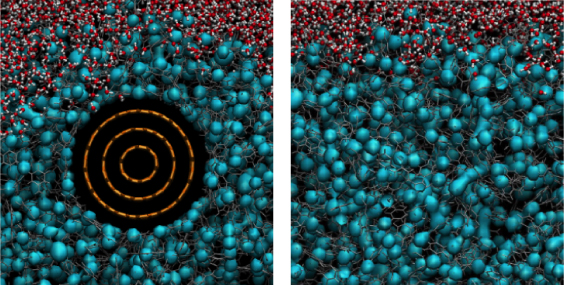
Simulation showing high-speed permeability (RIST)
Left: CNT/PA nano-composite RO membrane, Right: Plain PA membrane
2
"Modularization and Systematization of Nanocarbon RO Membranes"
Base materials were investigated and spacers suitable for nanocarbon membranes were developed at the Aqua Innovation Center for the widespread application from seawater desalination to wastewater reuse and to establish modularization technology. The on-campus equipment will produce small modules with a diameter of 2 to 4 inches, which will contribute to improving the performance of the modules and will also be used for evaluation tests for various industrial applications.
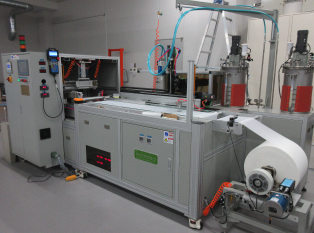
Small module production equipment
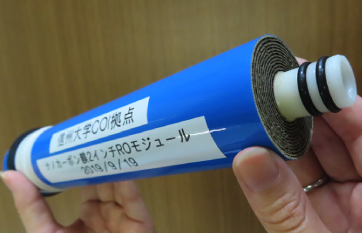
2-inch module with nanocarbon
RO membrane made by Shinshu University
In addition, we will study mounting methods that take advantage of the robustness of the developed membrane, and conduct verification tests targeting seawater desalination, sewage regeneration, and ultrapure water production at facilities such as Water Plaza Kitakyushu which will be suitable for social implementation.

Verification test equipment (Water Plaza Kitakyushu)
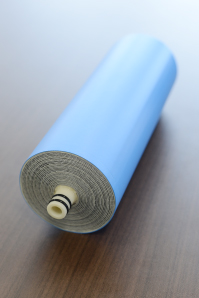
Nanocarbon
RO membrane
4-inch module
used in the
verification test
3
"Development of RO Membranes for Various Applications"
We have developed mainstream seawater desalination, wastewater reuse, industrial ultrapure water production, water purifiers for POU (Point of Use), and other optimal RO membranes for various purposes, expanding further to water purification equipment and systems. In addition, a separation membrane with a high degree of resistance that surpasses conventional membranes against the adhesion of inorganic substances such as silica, organic substances, and other contaminants to the membrane was made possible.
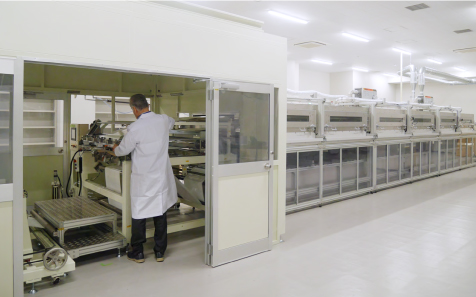
University Factory
Large-size membrane production equipment
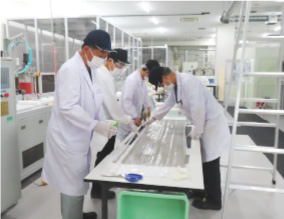
Defect inspection of nanocarbon RO membranes
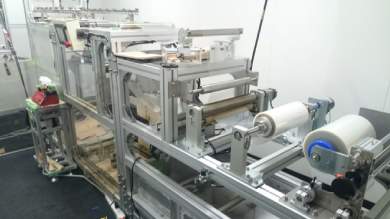
Small-size membrane production equipment for 2-inch module
4
"Development of New Materials and Processes Using Nanomaterial Science"
Developed and systematized the inorganic crystal materials that remove the hazardous ions such as heavy metals and anions, and surface polymerizes parylene membranes that selectively permeates specific substances. Textiles containing inorganic crystal materials for removing fluorine and organic/inorganic composites for detecting fluorine concentration are being developed to improve the water conditions in eastern Africa.
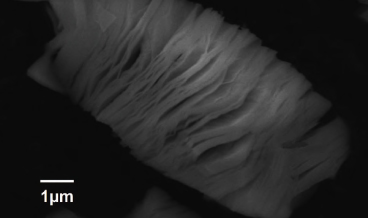
Inorganic crystal material for fluorine removal
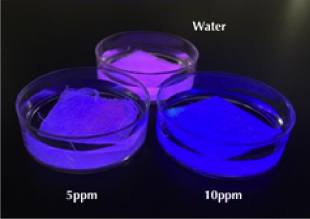
Fluorine monitor
Developed new materials that dramatically improves durability and heat resistance by combining nanomaterials with rubber and resin. High-performance sealing materials were being evaluated at the seawater desalination verification test facility at Water Plaza Kitakyushu.
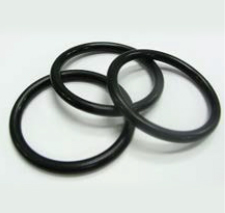
High durability O-ring with
carbon nanotubes
and rubber composite
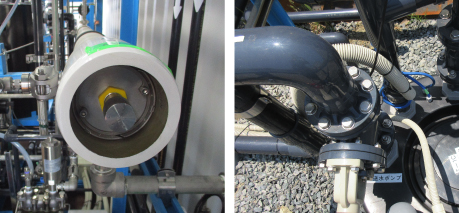
High-performance sealing materials are used
for packing vessel side plates and flange joints
5
"Water Environment Engineering"
Japan Agency for Marine-Earth Science and Technology (JAMSTEC) COI-S satellites will complete the world's first general water circulation model that combines the atmosphere, marine environments, and land areas, and predict the water environment of the target area.
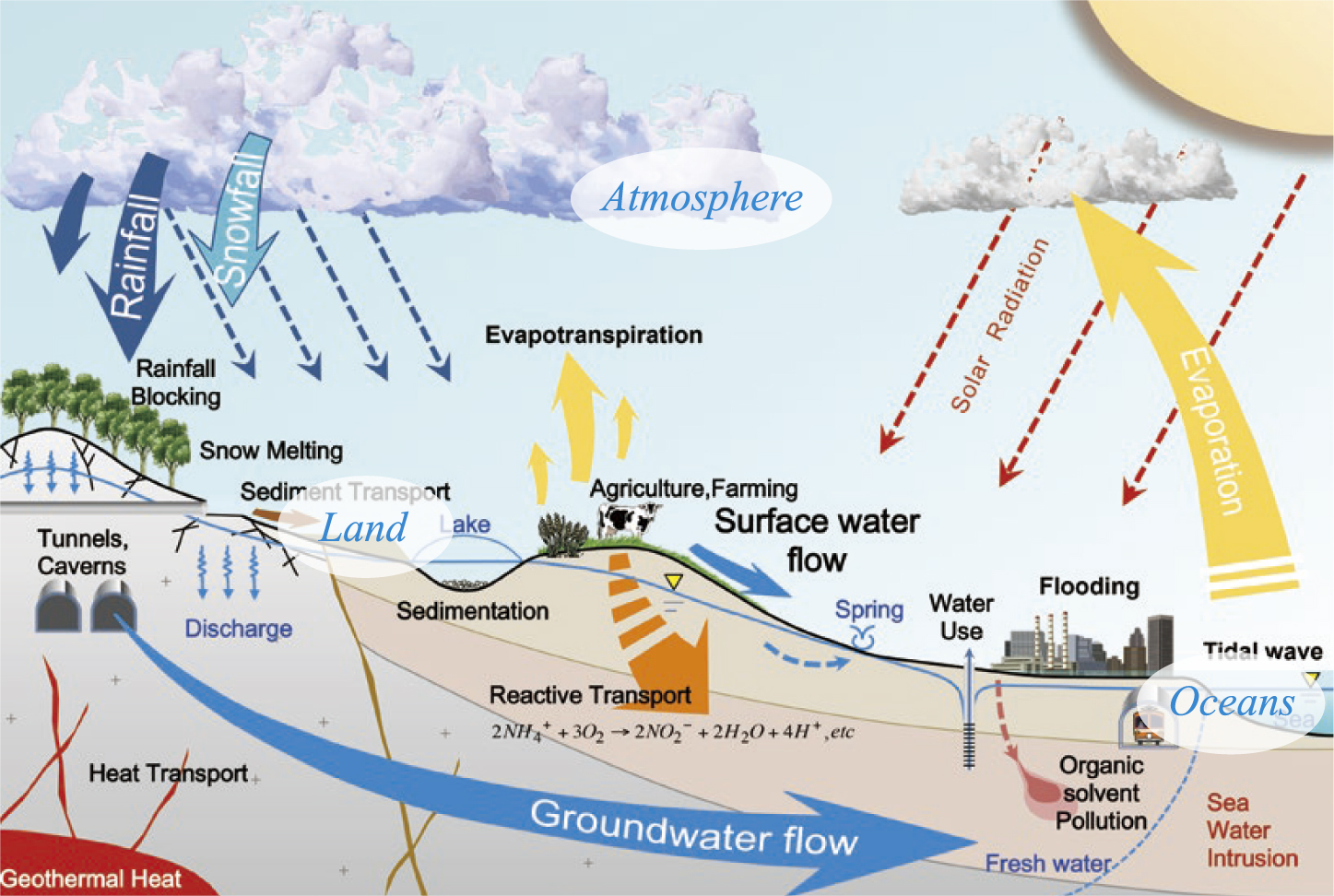
In addition, through the "Water Environment Improvement Project" between Shinshu University and local organizations in places such as Africa, we have established a mechanism to remove harmful substances such as fluorine contained in domestic water sources locally and built a water resource management system. This joint project contributes to the improvement of the water environment.
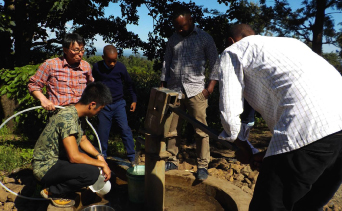
Survey of the well water quality
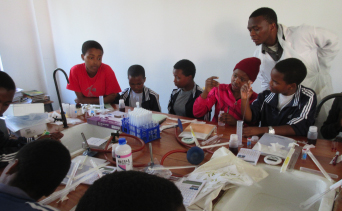
Education about water environment
(Sakura Girls Secondary School, Tanzania)